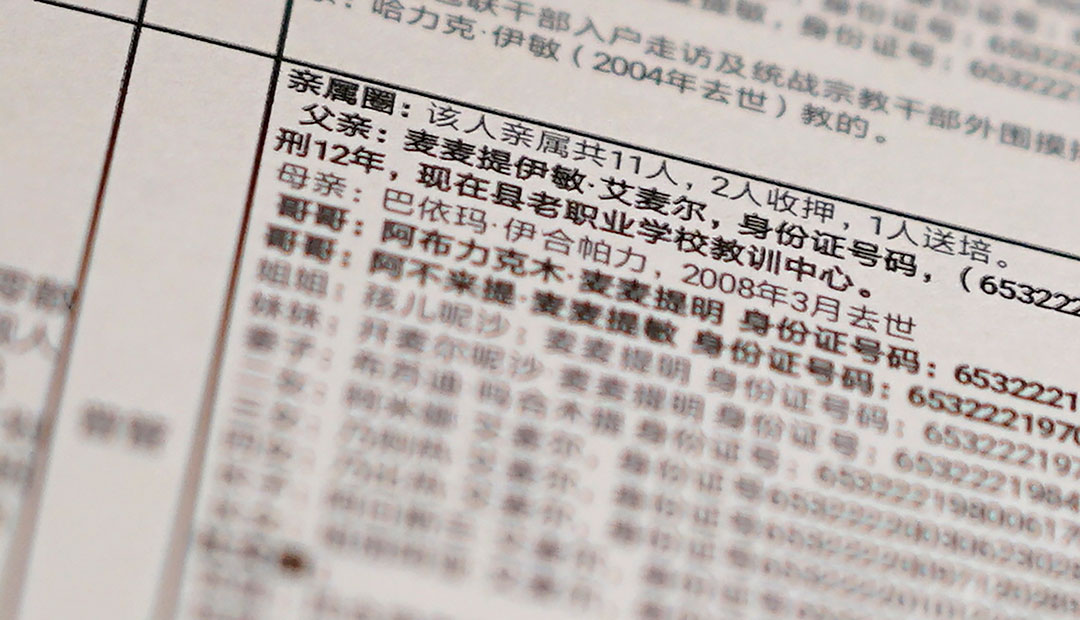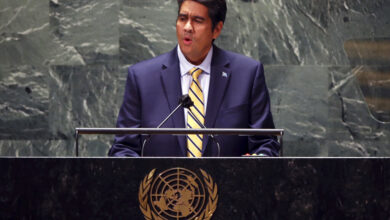CCP used personal, religious info to justify detaining Uighurs in camps, leaked document reveals

Top Stories | Feb 29, 2020:
FORUM Staff
Chinese Communist Party (CCP) officials documented detailed personal information on ethnic minority Muslims to determine whether they should be interned in detention camps, according to a document viewed by members of several major news organizations.
The 137-page document tracked the internment of 311 people from a county in Xinjiang and recorded details on more than 2,800 of their relatives, neighbors and friends, nearly a quarter of whom had also been interned or imprisoned at some point, according to The Wall Street Journal newspaper.
Besides listing a detainee’s identifying information and reason for detention, the records included intimate details of their lives such as whether they planned to travel outside the country, how often they pray or participate in other religious practices, The New York Times newspaper and other media reported. The detainees on the leaked list hailed from a mainly Uighur settlement called Karakax County near the Taklamakan desert in southwestern Xinjiang, The Associated Press (AP) reported, with the most recent entry dating to March 2019, according to The New York Times.
Their internments were part of a larger operation that landed more than a million ethnic minorities, mainly Muslims, in detention centers in the northwestern region of Xinjiang, which the CCP calls reeducation centers and claims it uses to fight extremism. (Pictured: This February 16, 2020, photo captures details from a leaked document that offers a personal view of how Chinese Communist Party officials determined whom to intern it its detention camps.)
The document “underscores the witch-hunt mindset of the government and how the government criminalizes everything,” Adrian Zenz, a senior fellow at the Victims of Communism Memorial Foundation in Washington, D.C., told AP.
The document also reveals that the majority of people on the list were sent to internment camps not for extremism, as the CCP has claimed, but for reasons such as having too many children or applying for a passport, Abduweli Ayup, a Norway-based Uighur activist, told The Wall Street Journal.
“This document is really important because it tells us the reality,” Ayup said. “In the document, there are only three cases related to separatism,” Ayup told The Wall Street Journal.
Other traits included in the spreadsheet include whether individuals regularly attend a mosque, attended a funeral, wore a veil or grew a long beard, the BBC reported.
“This remarkable document presents the strongest evidence I’ve seen to date that Beijing is actively persecuting and punishing normal practices of traditional religious beliefs,” Zenz, who is an expert on detention centers, told the BBC.
The document cited various rationale for detention, including “minor religious infection,” “disturbs other persons by visiting them without reasons,” “relatives abroad,” “thinking is hard to grasp” and “untrustworthy person born in a certain decade,” AP reported. Nearly one-third of detainees who were dubbed “untrustworthy” were age 25 to 29, Zenz told AP.
Zenz told The New York Times that about 75% of the people on the list had been released, but the document indicated the detainees would continue to be monitored after their release.
Ayup helped journalists verify the veracity of the document, which is representative of the pulchritude of files kept on detainees and reveals the systematic approach to control citizens in the region, according to members of the Uighur exile community.
“The Chinese Communist Party has codified its intrinsic fear of religiosity and ethnic difference into a sophisticated set of internally-consistent, quasi-scientific criteria for internment and release,” Zeng further explained in a new paper published in the Journal of Political Risk.
The Uighur exile community released other documents to journalists in 2019 that detailed how the CCP’s mass detention system works and the historical context in which the internment camps were established.




